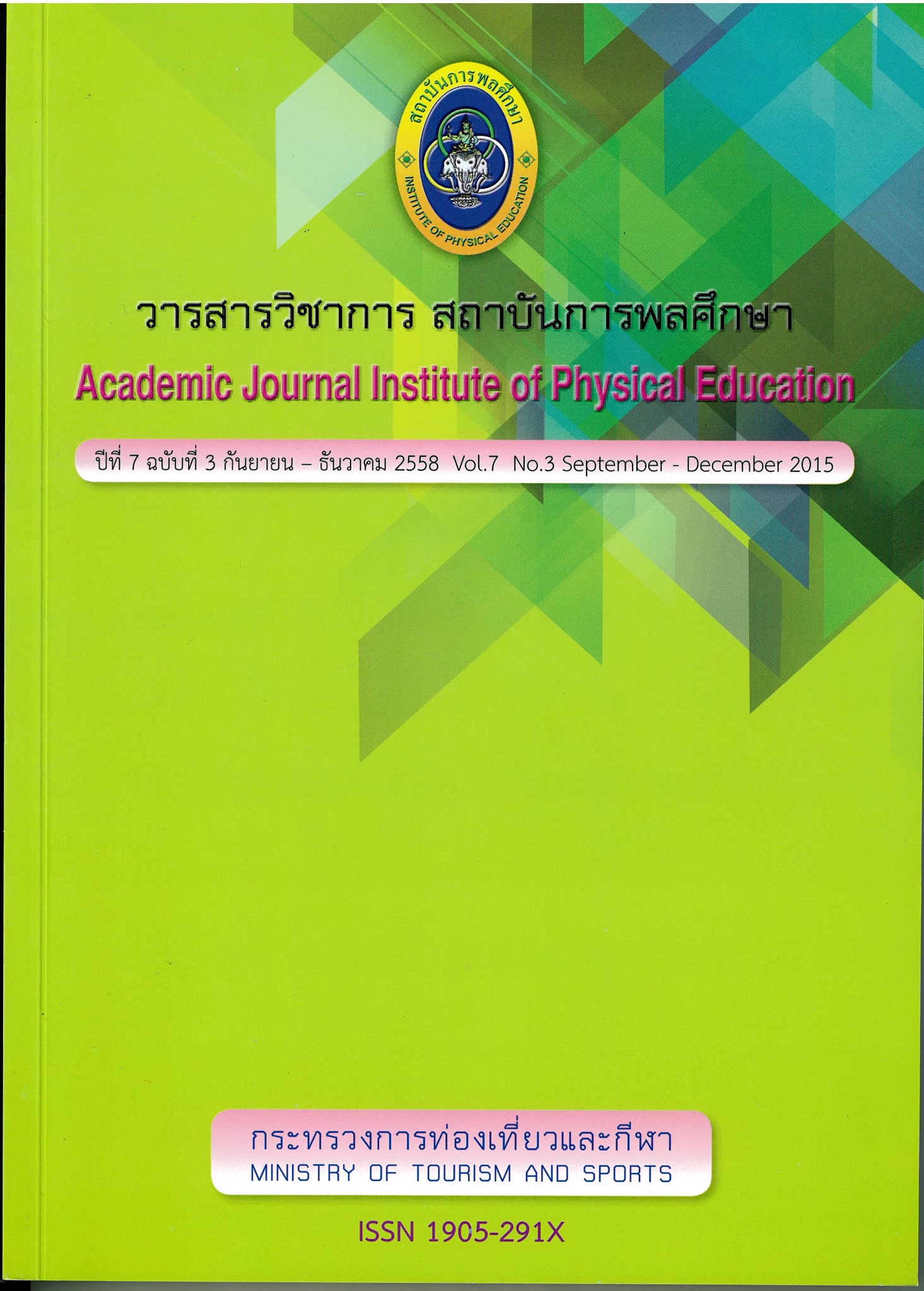Tourism Management Administration of Chiang Khong District as Border District
Main Article Content
Abstract
The objective of this research were 1) to study on tourism context of Chiang Kong District before and after using the 4th Thai - Lao friendship bridge for developing tourism strategies 2) to present Chiang Kong District tourism models. The data collection by surveying, interview, mini group discussion and questionnaires. There were samples: government officials, private section, tourism entrepreneurs and tourist 424 persons. Data analyzed by quantitative statistic percentage, S.D. and descriptive statistics.
From the study, it was found that 1) Chiang Kong District has potential of tourist attractions but there are lack of development only Tai Lue culture is outstanding. Besides, when the 4th Thai - Lao friendship bridge opened the border tourism crossing from Buck Pier to Huayxai continuing to Luang Phrabang and Xisuang Banna (Jinghong) are convenient and develop the economics both sides . Chinese tourists prefer to drive their own car passing through R3A for take a trip in Thailand. 2) Chiang Kong District Tourism strategies 2558-2561 focus the important to the upper GMS countries cooperation and develop the tourist attractions like the big catfish symbol, border market under the context of "Chiang Kong District one city two models" 3) Linked tourism model is appropriate to connect Chiang Kong District by using Tai Lue culture based and Huayxai, Luang Namtha of Lao PDR. Muang La and Xisuang Banna of South China. These are the reasons to make Chiang Kong District is the first gateway of upper greater Mekong sub region.
Article Details

This work is licensed under a Creative Commons Attribution-NonCommercial-NoDerivatives 4.0 International License.
The published article is a copyright of the Academic Journal of Thailand National Sports University. The passage appeared in each article in this academic journal is a perspective of each author which is not related to the journal. Each author is required to be responsible for all components of his/her own article. If there are any mistakes, each author must be responsible for those mistakes on his/her own.
References
กรมเจรจาการค้าระหว่างประเทศ (2550). แนวพื้นที่เศรษฐกิจ (Economic Corridor) และเส้นทางเศรษฐกิจที่สําคัญในอนุภูมิภาคลุ่มแม่น้ําโขง (GMS), กรุงเทพฯ : สํานักอาเซียน.
กรมอาเซียน. (2554). การเชื่อมโยงในภูมิภาคอาเซียน (ASEAN Connectivity). กรมอาเซียน.
กระทรวงการต่างประเทศ คณะกรรมการบริหารงานจังหวัดแบบบูรณาการจังหวัดเชียงราย (2556). แผนพัฒนาจังหวัดเชียงราย พ.ศ. 2557-2560. เชียงราย: สํานักงานจังหวัดเชียงราย,
คณะกรรมการบริหารงานอําเภอแบบบูรณาการอําเภอเชียงของ. (2556). แผนพัฒนาอําเภอเชียงของ 4 ปี พ.ศ. 2558-2561, เชียงราย: ที่ทําการปกครองอําเภอเชียงของ .
ณัฐกร วิทิตานนท์. (2556) ความพร้อมของภาครัฐและองค์กรปกครองส่วนท้องถิ่นในการจัดบริการสาธารณะเพื่อรองรับการท่องเที่ยวในเขตอําเภอชายแดน กรณีศึกษาอําเภอเชียงแสน และอําเภอเชียงของ จังหวัด เชียงราย. แผนงานสร้างเสริมนโยบายสาธารณะที่ดี (นสธ.) ภายใต้การสนับสนุนของสานักงานกองทุน
สนับสนุนการสร้างเสริมสุขภาพ (สสส.).
ปนัดดา จีนประชา. (2557) การท่องเที่ยวเชิงวัฒนธรรมไทลื้อสองฝั่งโขงโดยเส้นทางจักรยาน, วิทยานิพนธ์ปรัชญาดุษฎีบัณฑิต สาขาภูมิภาคลุ่มน้ําโขงและสาละวินศึกษา มหาวิทยาลัยราชภัฏเชียงใหม่,
ทวีป ศิริรัศมี. (2552), การท่องเที่ยวชายแดนไทยกับประเทศเพื่อนบ้าน,ชุดโครงการนโยบายและแผนอุตสาหกรรมท่องเที่ยว กรุงเทพฯ.
ธงชัย ภูวนาถวิจิตร. (2553) ยุทธศาสตร์การพัฒนาการท่องเที่ยวเชิงบูรณาการ บนเส้นทางยุทธศาสตร์ R3A (เชียงราย-คุนหมิง), ปรัชญาดุษฎีบัณฑิตสาขาวิชาสังคมศาสตร์มหาวิทยาลัยแม่ฟ้าหลวง.
ภูวนิดา คุณผลิน. (2550). การบริหารการพัฒนายุทธศาสตร์การท่องเที่ยว กรุงเทพฯ: มหาวิทยาลัยรามคําแหง.
มาโนช ชาบรา. (2557) การพัฒนาระบบสารสนเทศเพื่อการส่งเสริมการท่องเที่ยวเชิงวัฒนธรรม โดยการมีส่วนร่วมของชุมชนลุ่มน้ําโขง อ.เชียงของ จ.เชียงราย วิทยานิพนธ์ปรัชญาดุษฎีบัณฑิต มหาวิทยาลัยราชภัฏเชียงใหม่,
มิ่งสรรพ์ ขาวสะอาด. (2553). การพัฒนาการท่องเที่ยวเชิงบูรณาการที่ยั่งยืนในลุ่มน้ําโขง 4. เชียงใหม่: สถาบันวิจัยสังคม มหาวิทยาลัยเชียงใหม่


